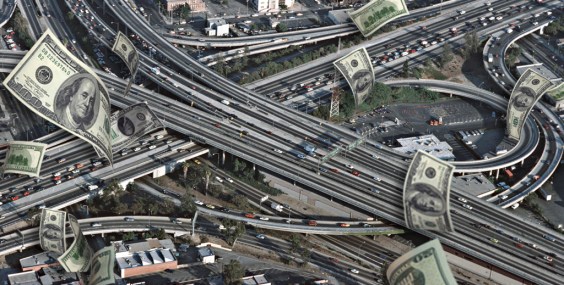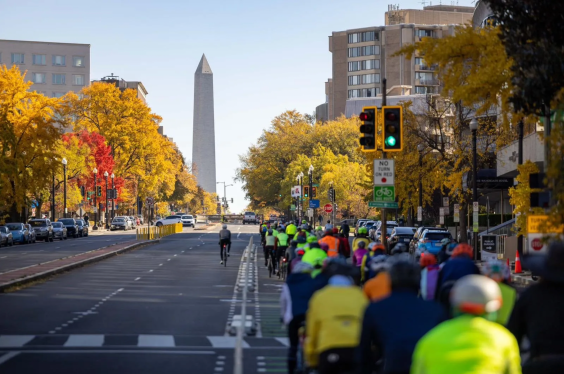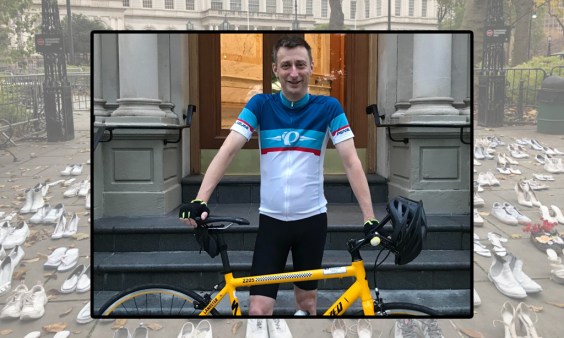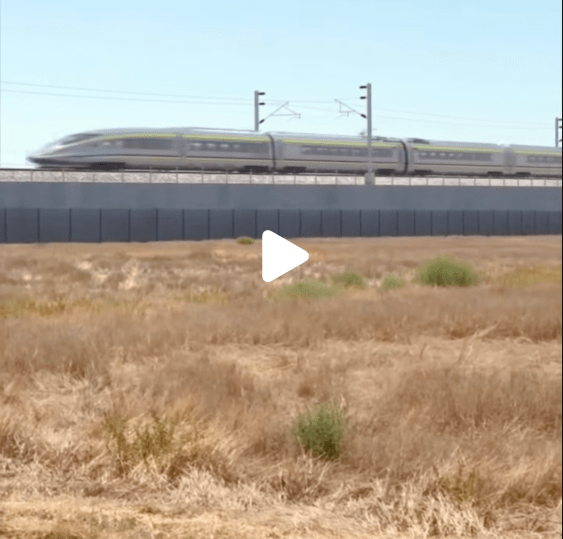We hope you enjoyed part one of our Q&A with Alan Durning, which we published yesterday. Durning is publishing a series of articles on his blog at the Sightline Institute -- where he serves as executive director -- about the ways that underpriced parking drives up rents, eats up space, and makes no sense.
A reader asked in the comments yesterday whether performance pricing could actually lead to more driving -- a question that I also asked at the end of the interview. Durning responded in the comments, but his thinking on the subject is more fleshed out here -- along with his thoughts on the political calculus of parking policy, how cruising drivers can be a menace to cyclists, and reasons to be optimistic about the future.
Tanya Snyder: Free and abundant parking gives drivers an incredible incentive to drive, because they can just put their vehicle wherever they want and they won’t have to pay for it. But even with all the ways parking policies incentivize driving, it’s still not enough to fill all the spaces developers are building. You are still counting all these empty spaces. Considering the cost that goes into building those spaces, why is it taking so long for cities and developers to say, “Oh, we’re doing this completely wrong; we’re losing tons of money.” You’d think the bottom line would have translated a long time ago into a correction of this. Why has that not happened?
Alan Durning: I’ve thought about that a lot and that’s why I started the series with “Who Parked in My Spot?!” to describe the intensity of territoriality that residents feel about free on-street parking. Business owners feel a similar protectiveness of free on-street parking for their customers. So you look around city, and there’s no neighborhood where there isn’t intense, visceral political pressure for lots of free parking.
So that’s the political fuel that perpetuates the whole system. Local elected officials are not passionate about parking. No one goes into politics or runs for elected office because they want to change parking policy.
Developers hate parking requirements but because all the developers in the city have to obey the same rules, they can usually pass the cost on to the tenants or to the buyers. So the loser in this is always the person who’s moving into a building. Those people don’t have a say. All the actors in this process are responding rationally to the incentives that they face.
TS: And it’s the people who are losing the most that have no way to respond.
AD: Right. So [parking requirements are] the perfect political solution to the problem. That’s why it hasn’t been fixed -- because from a political perspective, it’s not a problem. It’s a solution.
But [if a city implements Donald Shoup’s recommendation to charge for street parking and rebate some of the meter revenue to the neighborhood] some residents in the neighborhood will switch sides. And now you have a situation where politicians have to choose, have to lead. And it doesn’t take that many people switching sides until the political dynamic is all scrambled and new things become possible.
The last article I’m planning to do [for the series] is going to be called “Seven Reasons Why Parking Reform Is Now Possible.” We’re going to talk about the things that are shifting, that are reasons to hope. The number of cities that are doing this whole package, of performance pricing, plus revenue sharing, plus reducing off-street parking requirements. The steady spread of information technology into the backwater of parking --
The ultimate gamble is that the benefits of urbanism beat the benefits of sprawl. And we’re winning it. Even though parking rules and transportation spending patterns are against us.
TS: Which allows enforcement to be easier and less costly.
AD: Exactly; which reduces the transaction cost so it makes sense to charge for parking in more circumstances, which makes enforcement easier. And it also allows the emergence of markets for small numbers of parking spaces. So there’s already a market for a parking garage full [of parking spaces], but ParkAtMyHouse and other apps make it possible to rent out a single space much more efficiently.
Car-sharing is a substantial factor. Some cities are now recognizing that if you have a car-sharing vehicle close to a new development you can eliminate four parking spaces. The scrambling of the taxi market that’s happening through ride-share companies like Lyft and Sidecar. And then peer-to-peer car-sharing -- RelayRides, GetAround -- that are allowing a private market to emerge for your neighbor’s car, by the hour. And even the Buck Rogers stuff about self-driving vehicles, the Google car that drives itself.
One of the biggest impacts of that -- if it happens, which I expect will be much longer than the five or 10 years [projected] -- is that right now, a car is parked 23 hours a day and driving one. But taxis -- which are the present-day analog of these self-driving vehicles -- are driving for how many, 18 hours a day?
TS: Well they’re just cruising around for some of those hours, but yeah.
AD: I’d be interested to know what share of the time taxis have a fare. But in any event, they’re on a trip way more of the time than private cars are -- many, many multiples.
The point is, we continue to build parking and require new developments to build parking on the assumption that future automobile use is going to be the same as current automobile use. That is, that it will be mostly private cars and that almost everyone will have one or two or three.
TS: So, the same way we’re critical of travel forecasts that are prompting cities to build more and bigger and wider roads based on usage demand models that we think are antiquated, cities are also overbuilding parking for the same reasons.
AD: Exactly. For all the same reasons. And it’s not just that millennials haven’t yet fallen in love with the car, it’s that all these new alternatives are emerging. And we can see even more on the horizon, like self-driving vehicles, whenever they come. Even if that’s 50 years from now, that’s still within the lifespan of the parking requirements that we’re imposing on new developments.
And every one of these innovations reduces how much parking is really needed -- even under the old model, where you assume it’s free. So those are some reasons we can be hopeful that parking reform will pick up speed after so many years of wringing hands among green urbanists.
TS: So there are all these factors that disincentivize driving, but one thing we haven’t talked much about is how free parking induces driving.
AD: We know it does -- we know that free parking induces driving and even vehicle ownership. If you live in a building that charges even $50 a month for each parking space, you’re going to have on average, what, five to 10 percent fewer vehicles. People sell that third vehicle. And the same goes for individual trips.
If everyone had to pay for their parking every time, they would drive less. They would also carpool more.
When they do surveys asking people why they took transit on a particular trip, the number one answer is usually because there was no free parking. This is why suburban malls -- some of them -- get so excited about putting in put in lots of parking, because they think that they’ll attract more drivers. And to a certain extent, they’re right, people are very sensitive to parking. But they’re also sensitive to parking availability as opposed to price. So it’s the total opportunity cost of parking.
TS: But if you are charging for parking and other places nearby are not… On U Street in DC, when they upped parking rates to $2 an hour, business owners were so sensitive to the idea that their customers were going to go to the suburbs.
AD: That’s a part of the political dynamic -- the competition between shopping destinations. It tends to reinforce the territoriality. But if you don’t ask people what they think and instead just look at their behavior, you’ll find that people value certainty about parking. They may grumble a little bit, but they’re quite willing to pay for parking if they’re sure they’re going to find it. And they weigh the time plus convenience plus cost in choosing their destination.
So if they can drive further to free parking, sometimes they’ll do that because the total cost of that seems better than going someplace closer and paying for parking. But also, lots of times people choose to go to places where they have to pay for parking. And the most popular neighborhoods in America tend to have congested parking you have to pay for. People are not fleeing those neighborhoods.
The ultimate gamble for all us urbanists is that the benefits of urbanism -- the huge agglomeration of people and activities -- beat the benefits of sprawl. And we’re winning it. Even though so many rules like parking rules are against us, and transportation spending patterns are against us. We keep putting most of the transportation dollars in the United States into suburban freeways, giant engines of auto dependence, but still cities are hot. And suburbs trying to become more urban.
TS: I wanted to get back to the parking apps, and even market pricing, which seem to work both ways because they might be making parking more expensive but they’re also making it easier. There are people who live in dense neighborhoods who, if they’re going to be home after 6 p.m., just won’t take their cars out because they’re afraid they won’t find a spot when they get home. But if they know there will be a spot or two, they will.
AD: So let me phrase your question this way: Is information technology going to encourage driving because it makes it so much easier to find a parking space?
TS: Or even market pricing.
AD: There will be all conceivable effects, but the net effect will be big improvements. Here’s why.
Cruising for parking is a particularly egregious form of driving. Cruising for parking is, on average, a third of vehicles moving through popular commercial districts in cities. It is especially bad for people on buses and for cyclists, because people who are cruising for parking are in the same lanes where the buses and the bikes want to be. People who are cruising for parking drive unpredictably; they suddenly slam on their brakes; they suddenly do a u-turn.
TS: And back up.
AD: And back up! The time I was closest to creamed on my bike was someone backing up trying to get into a parking space, and he was screaming in reverse right up the bike lane. So performance pricing -- because it eliminates cruising -- is an immediate, enormous benefit.
And it’s driving with no purpose. It doesn’t have any up-side.
TS: Right, there’s this idea that VMT and GDP are somehow inextricably linked, but you’re not getting any GDP out of cruising.
AD: Exactly. You’re getting negative utility. So performance pricing is a pure plus. And performance pricing ends up with same number of parking spaces being used. It’s mostly being put in, so far, in neighborhoods where the spaces are almost all full right now. It’s redistributing them a bit, and more efficiently.
The apps, more generally, that allow you to reserve and go directly to an off-street parking space may in some cases induce people to drive who wouldn’t have driven, but at same time, the apps are making apparent to owners of private spaces their value. And that flips around the political pressure for off-street parking. So I think the net effect of all that is hugely positive.







